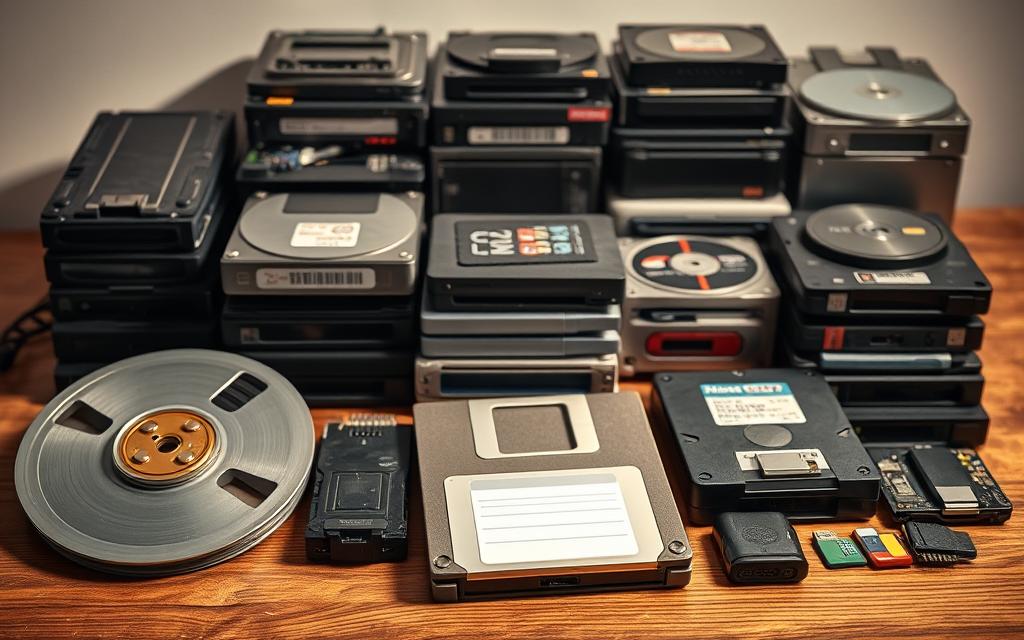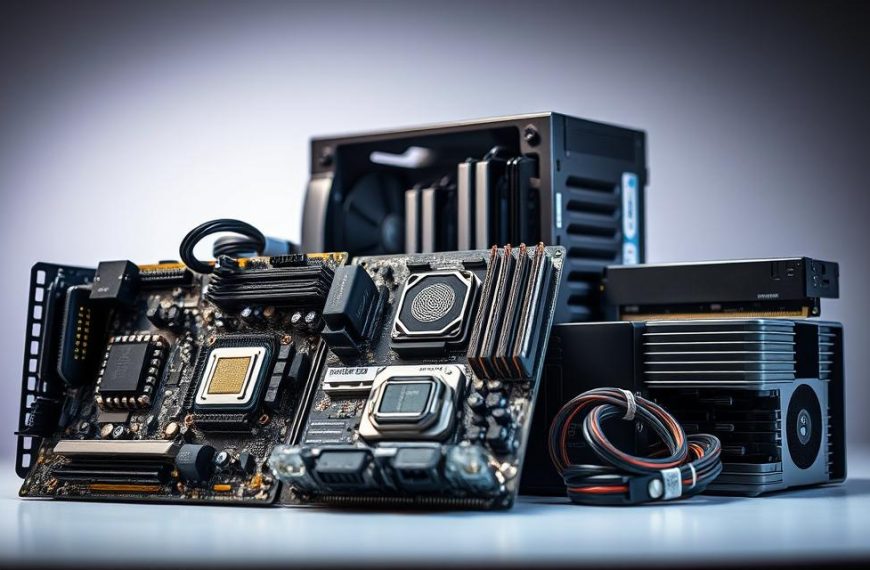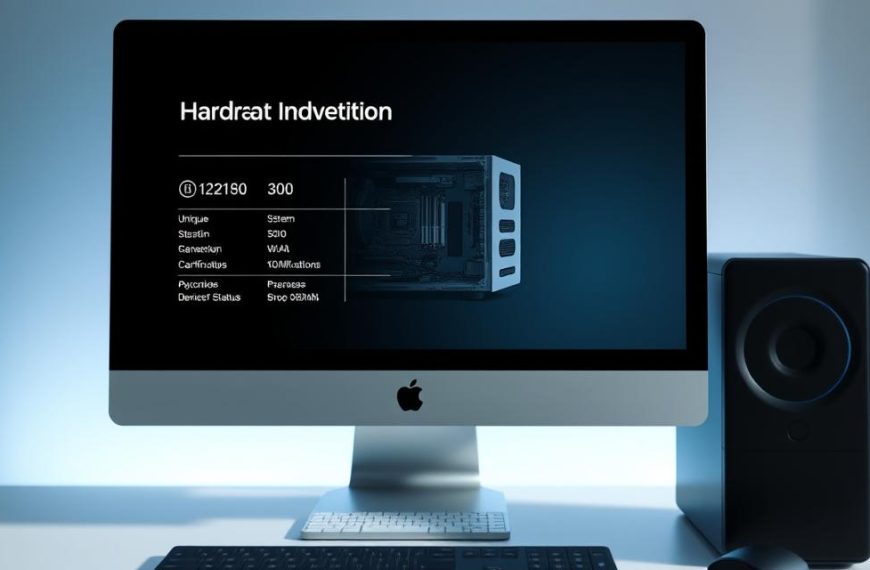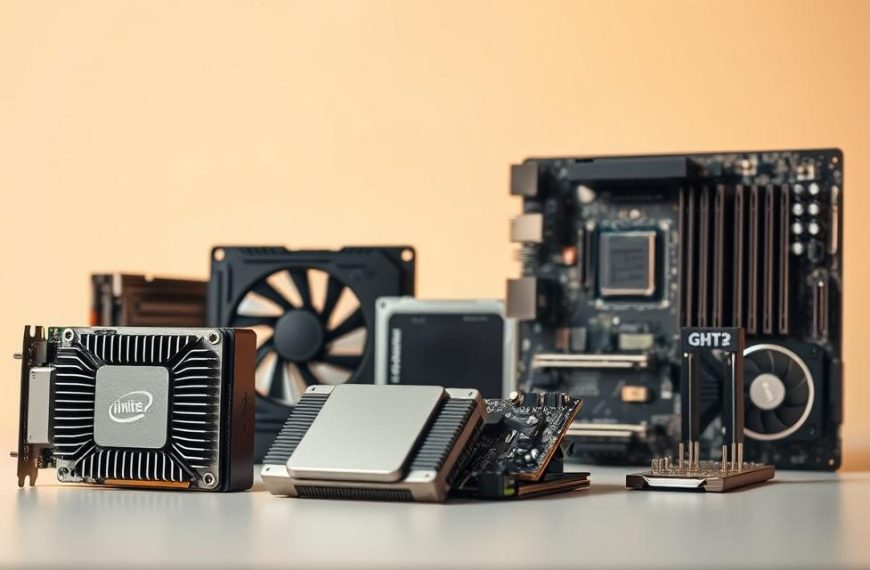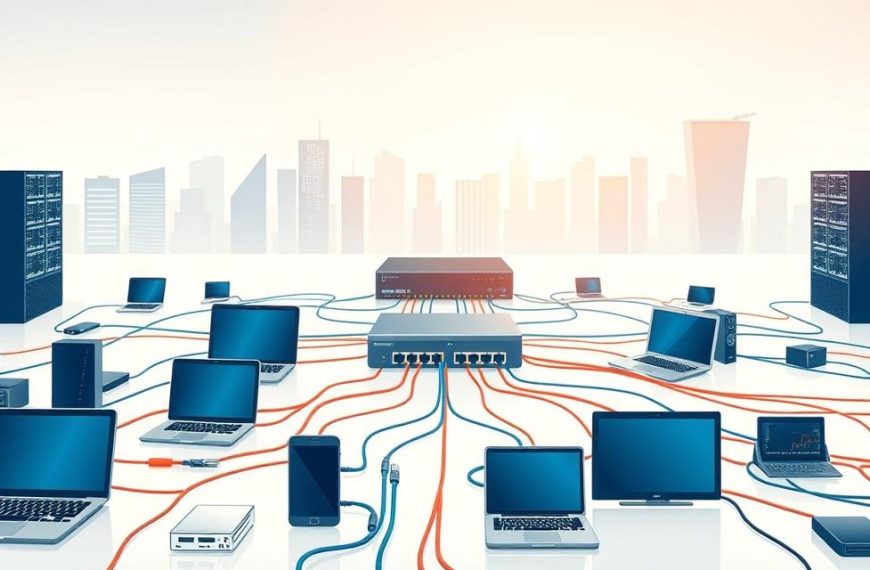Computer storage devices are vital for keeping digital information safe. They allow users to store important data efficiently across various tech platforms.
Digital storage uses different technologies to save and retrieve information. Computer storage has evolved from traditional hard drives to advanced solid-state drives.
Long-term data storage options include magnetic hard drives and compact flash memory. These devices offer various capacities, speeds, and costs to suit different needs.
Storage devices protect digital assets and allow quick data access. They also support complex computer processes.
Effective data storage is crucial in our digital world. It serves both personal and business needs.
Understanding Data Storage Fundamentals
Digital tech uses complex binary data storage systems. These turn intricate info into simple maths. Every digital bit exists as zeros and ones, which computers process precisely.
Digital info organisation starts with data encoding. Various encoding standards exist for different digital content types.
- Character encodings like ASCII
- Image encodings such as JPEG
- Video encodings including MPEG-4
The Binary Foundation of Digital Storage
Binary data storage changes complex info into basic computer units. Each item gets a unique bit pattern for precise digital display. These patterns form the base of computer info handling.
Measuring Digital Information
Grasping storage capacity units is key to understanding digital info organisation. Units range from tiny bits to huge terabytes. Each unit shows ever-growing data amounts:
- 1 Bit: Smallest unit of digital information
- 1 Byte: 8 bits
- 1 Kilobyte (KB): 1,024 bytes
- 1 Megabyte (MB): 1,024 kilobytes
- 1 Gigabyte (GB): 1,024 megabytes
Decimal vs Binary Measurements
Storage measurements can differ between decimal and binary systems. For example, 750 GB in decimal might equal 698 GiB in binary. This shows the complex nature of digital info storage.
Primary Storage: The First Layer of Data Management
Primary storage is vital for computer processing. It’s the first layer of memory management, allowing quick access to crucial data. RAM, a type of volatile memory, is key for active applications and system processes.
Primary storage has unique features. It connects directly to the processor and offers rapid data retrieval. Though limited, it provides high-performance storage essential for current system operations.
RAM enables quick data manipulation for running applications. ROM, however, retains critical system information even when the computer is off.
Primary storage’s performance is noteworthy. It supports fast response times and handles input/output sensitive structured data workloads. These features are crucial for business-critical applications.
Emerging technologies like non-volatile RAM are reshaping primary storage capabilities, promising enhanced data management strategies for future computing environments.
What Computer Hardware Stores Long-Term Information
Computer storage tech has made huge strides, giving us many ways to keep digital info safe. Hard disk drives and solid state drives are top choices for long-term data storage. Knowing these options helps people and firms choose the best way to save their digital stuff.
Hard Disk Drives: Traditional Data Storage
Hard disk drives (HDDs) have been key in computing for years. They store data on spinning disks using magnets. Most HDDs spin at 5400–7200 RPM.
Hard disk drives offer lots of storage at good prices. They can hold from 500 GB to several terabytes of data.
- Mechanical components allow significant data storage
- Typical capacities range from 500 GB to several terabytes
- Lower cost compared to solid state drives
Solid State Drives: Modern Performance Storage
Solid state drives (SSDs) have changed storage tech by using flash memory. SSDs have no moving parts, making them faster and better than HDDs. They speed up data access and boost system performance.
| Storage Type | Speed | Reliability | Cost |
|---|---|---|---|
| HDD | Slower | Moderate | Lower |
| SSD | Faster | Higher | Higher |
Optical Storage Solutions
Optical discs offer another way to store data long-term. CDs, DVDs, and Blu-ray discs are great for backing up and archiving info. These media are particularly useful for backup and archival purposes, keeping data safe for a long time.
New storage tech keeps getting better. It gives us smarter ways to save digital info for all sorts of uses.
Advanced Storage Technologies and Future Trends
Data storage is evolving rapidly, with new tech promising better efficiency and performance. NVMe storage allows flash-based SSDs to talk directly with CPUs via PCIe links. Future storage technologies focus on smart, adaptable systems.
Cloud data storage is changing how organisations handle their digital assets. AI algorithms move data between storage tiers based on use. QNAP’s QuTScloud and NetApp On Cloud offer standard management across different cloud setups.
Hybrid storage mixes SSDs and HDDs for better performance and cost-efficiency. The software-defined storage market is set to grow by £82.8 billion from 2024 to 2029. This shows rapid progress in storage tech.
Companies are prioritising data security with AI systems. These can spot potential threats by analysing access patterns. The future of storage isn’t just about space.
By 2025, AI, cloud tech, and new storage protocols will change how we handle digital info. They’ll create smart systems that can adapt to complex data management tasks.

